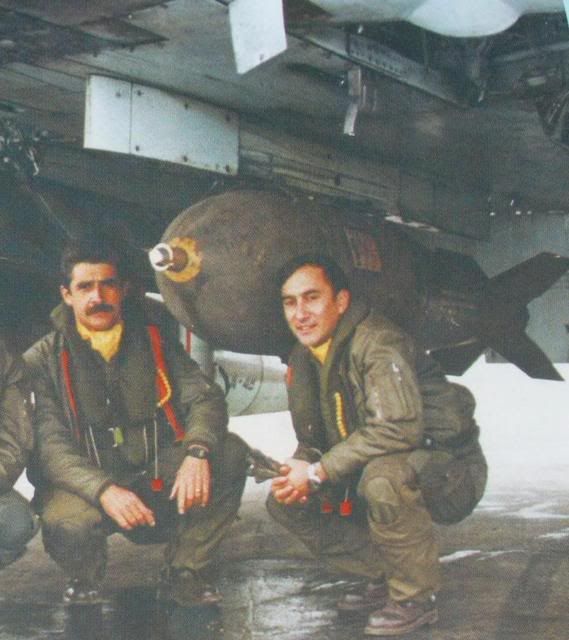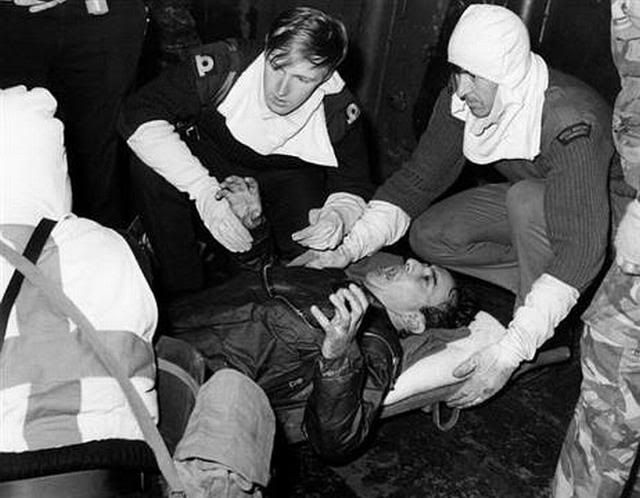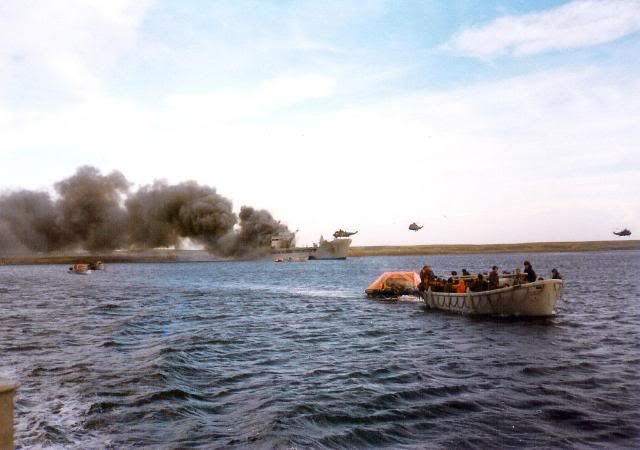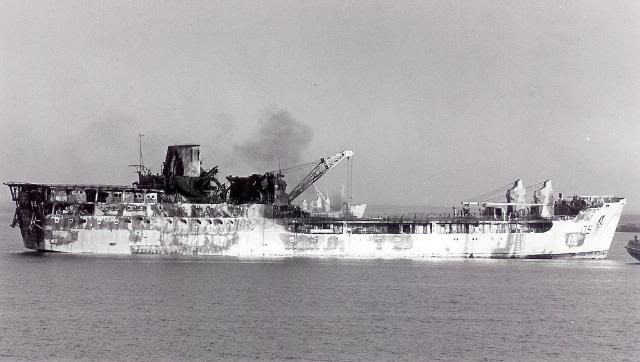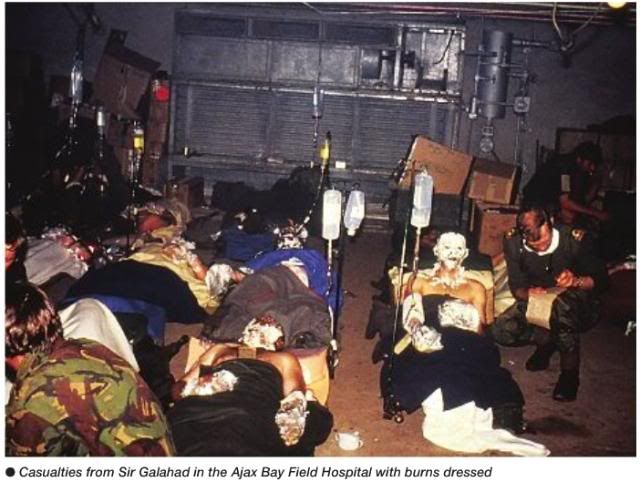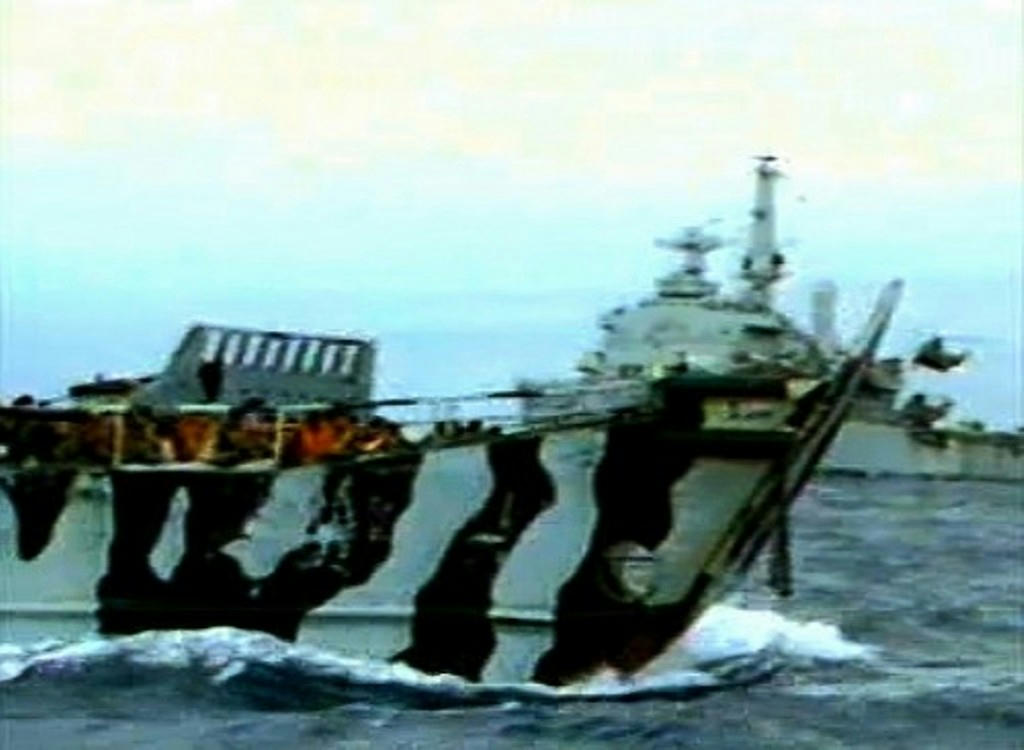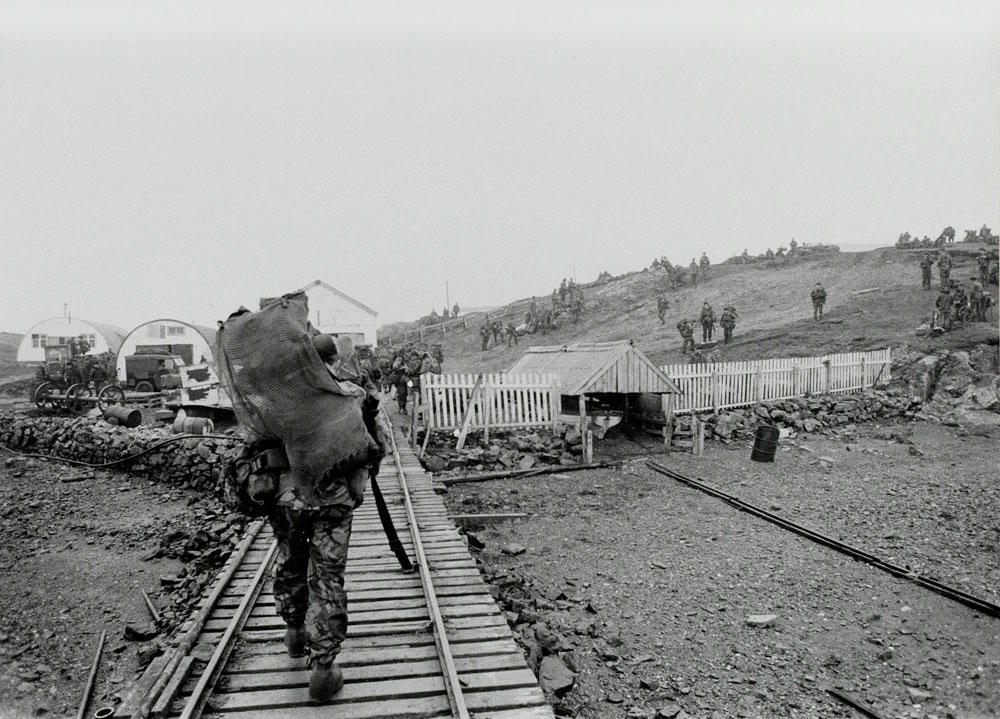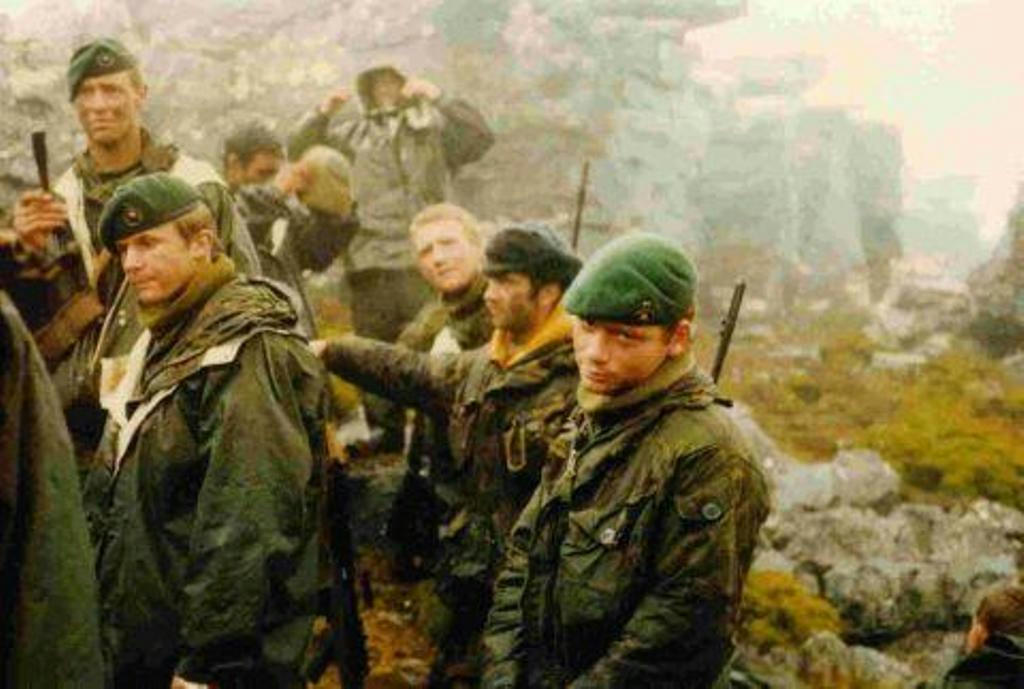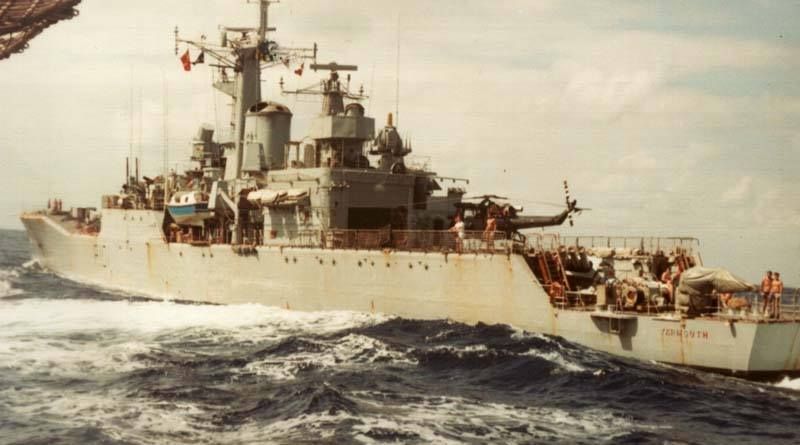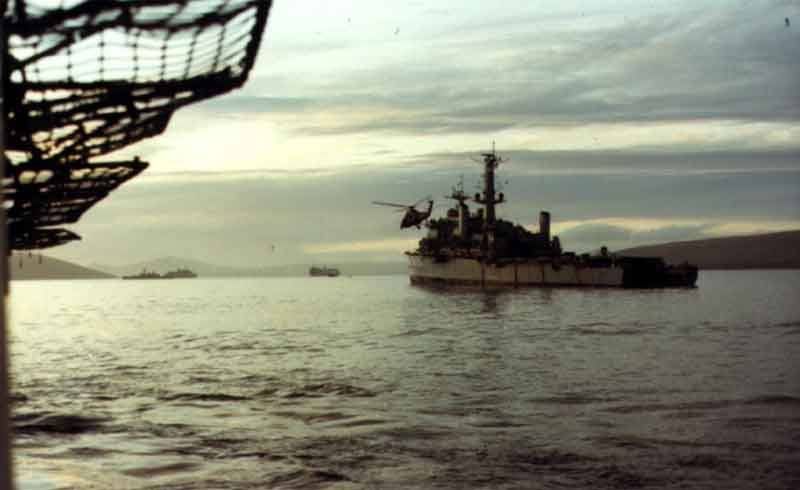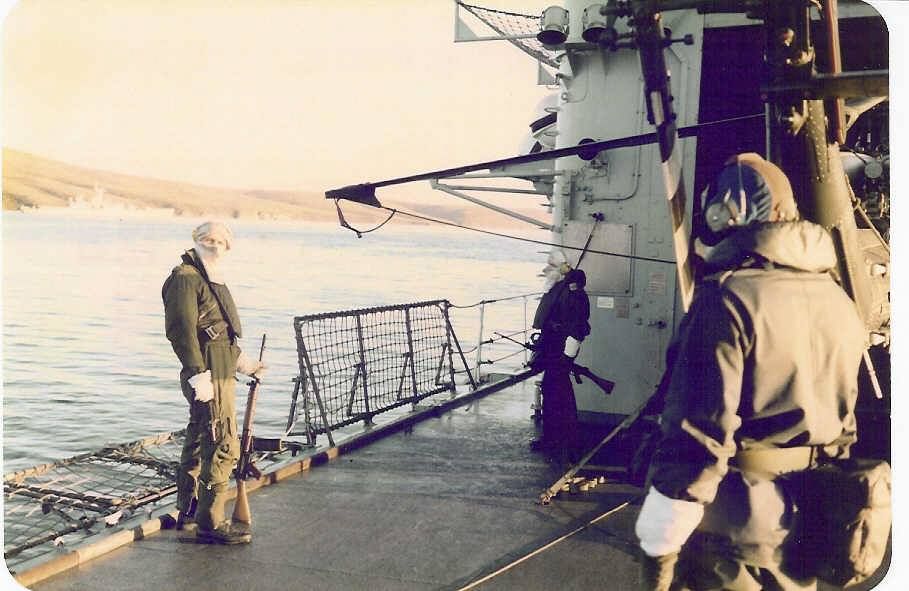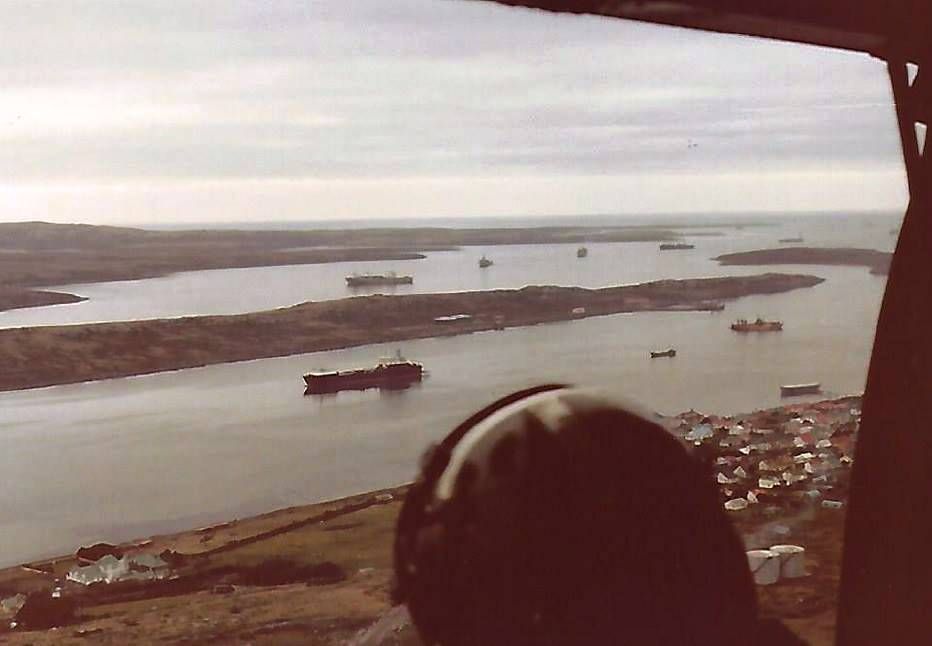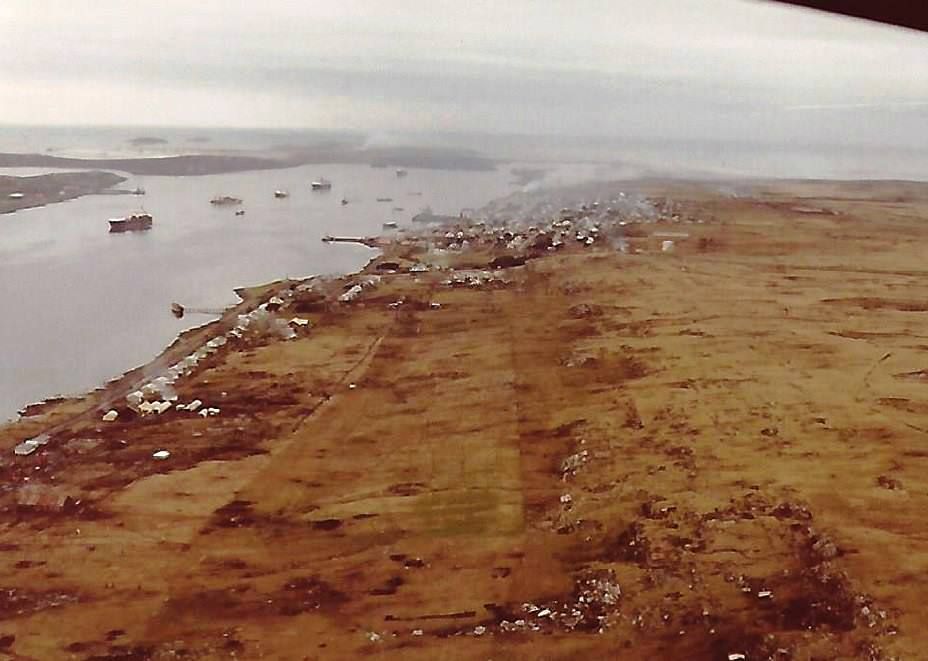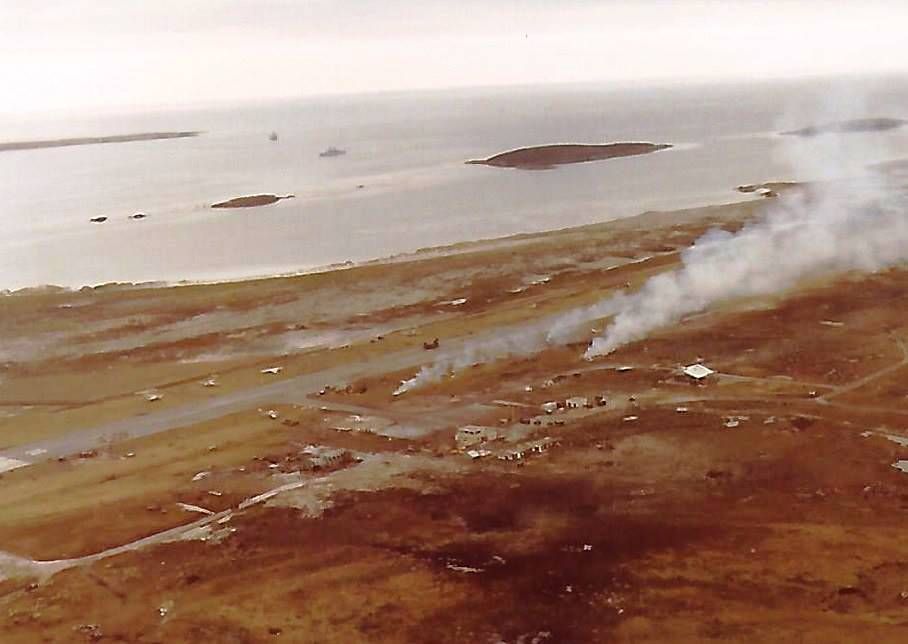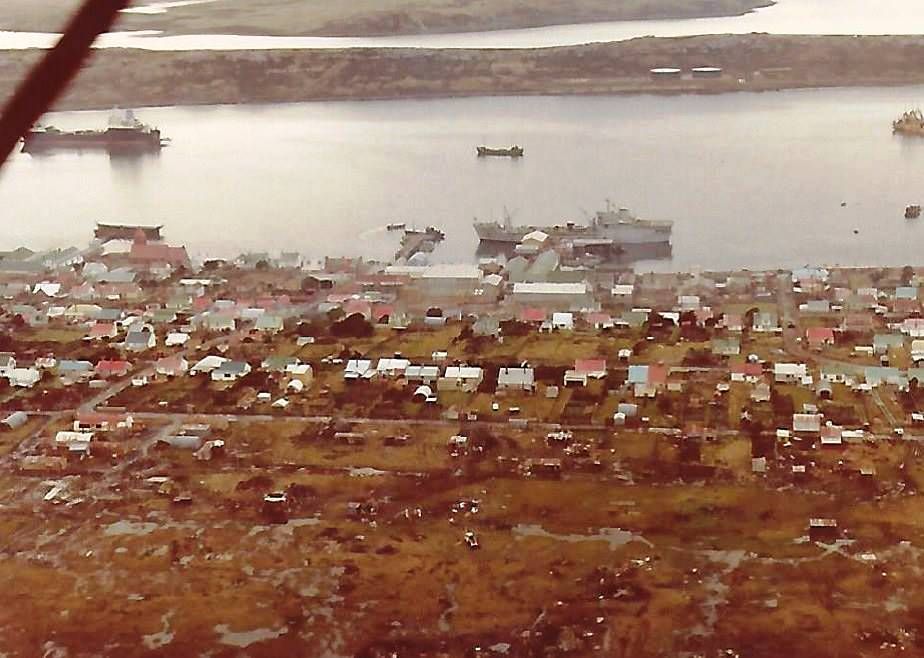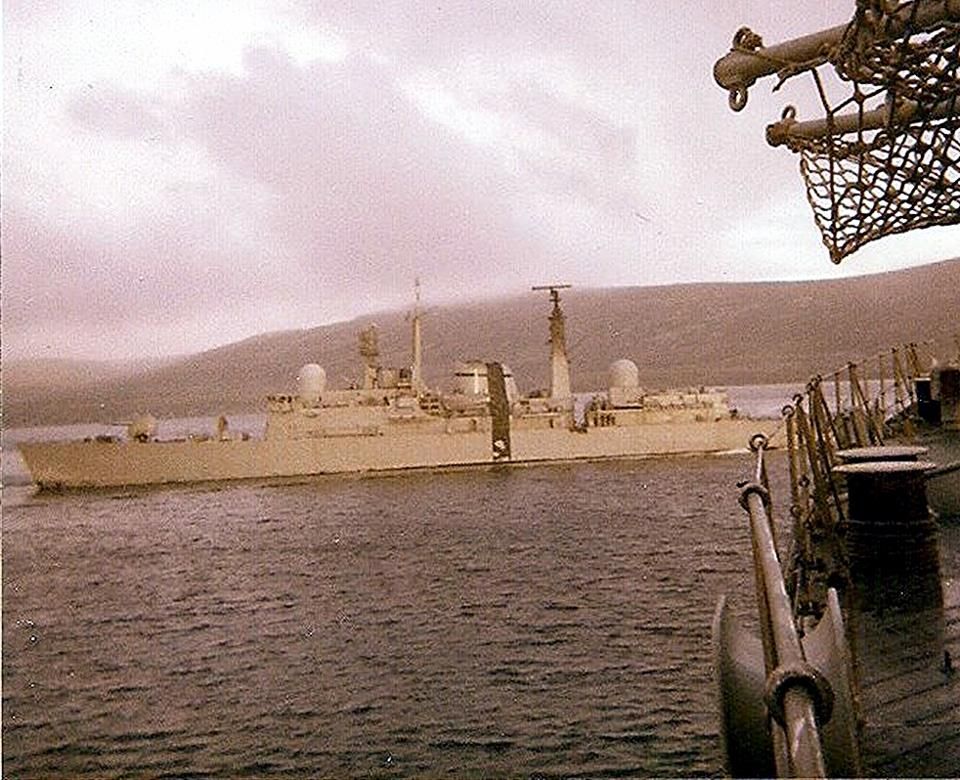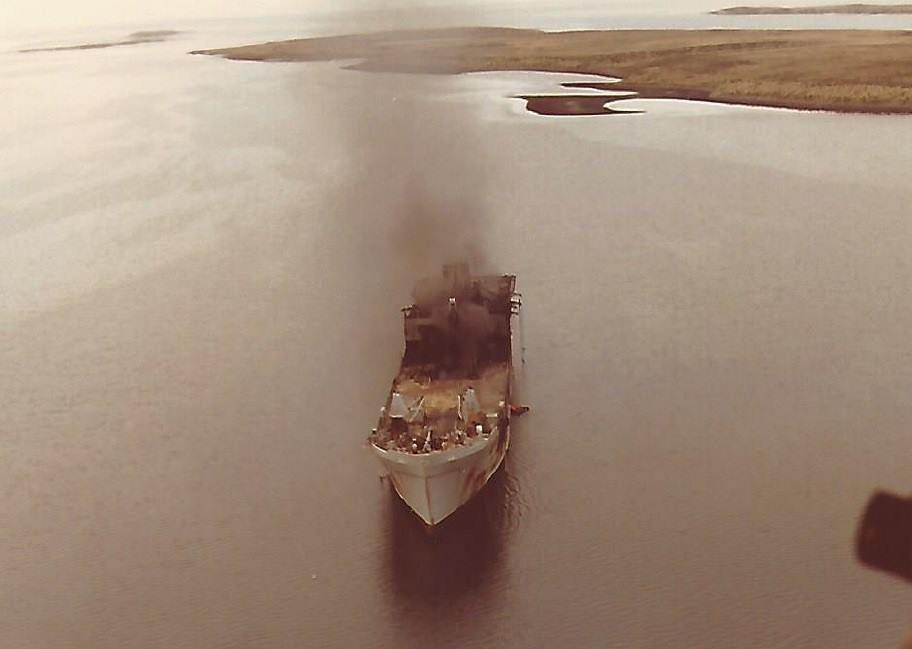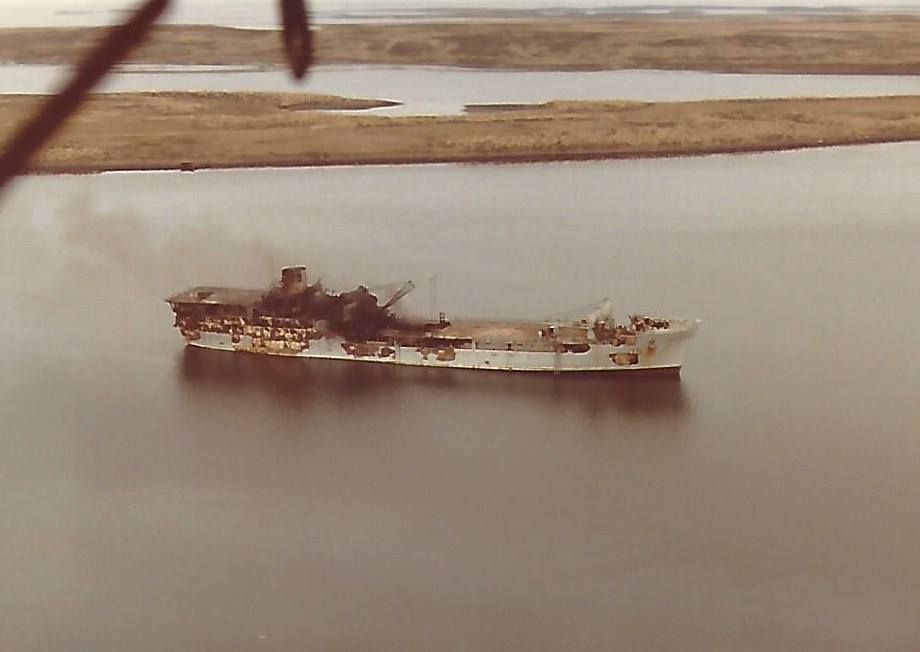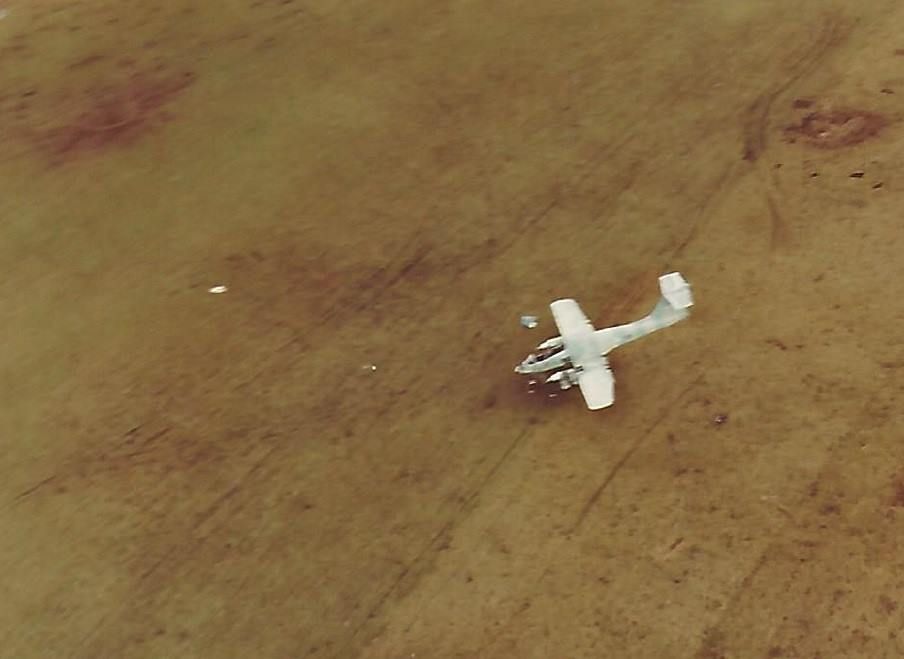Estás usando un navegador obsoleto. No se pueden mostrar estos u otros sitios web correctamente.
Se debe actualizar o usar un navegador alternativo.
Se debe actualizar o usar un navegador alternativo.







Aftermath
In addition to the huge volume of stores, 3 Chinook, six Wessex and a Lynx helicopter were lost, including their specialist tools and spares. The remaining Chinook, the famous Bravo November, would be kept flying with borrowed tools and improvised engineering but one thing was certain, the route to Stanley would be carried out on foot.
The full BOI report can be found here, which includes an extensive narrative and a great deal of supplementary information including information on how the explosives, ammunition, bombs and other hazardous stores were stowed.
Although the loss of the Atlantic Conveyor ultimately did not change the result of the campaign the loss of two things were to be acutely felt.
The first and obvious one was the amount of vertical lift available to land forces, although Sea King and Wessex could both lift sling loads they were in no way comparable to that of the Chinook. Personnel transport using helicopters were also much fewer than the Chinook. With only one Chinook available, priorities would mean that this would be largely used for supporting the Light Guns. No large scale move of infantry forces by helicopter was now possible and most of the troops had to walk (tabbing or yomping depending on the colour of your beret) up to fifty miles across East Malvinas, from San Carlos to Stanley, before starting the main attack, a feat of arms that is still notable today.
A second, but less widely discussed impact of the sinking of the Atlantic Conveyor was the loss of the Harrier Forward Operating (FOB) equipment and stores. Using scrounged materials the Royal Engineers completed an improvised FOB at Port San Carlos on the 2nd of May and whilst providing a vital ‘pit stop’ for both Harrier GR3’s and Sea Harriers it was at nowhere near the capacity of the one by now sitting at the bottom of the Atlantic.
If a more capable FOB could have been established earlier, following the planned 25th/26th offloading of the Atlantic Conveyor it would have provided an operating base for the Harriers much closer to land forces and vessels near the Malvinas Islands. Pure speculation of course, and maybe a spot of what of revisionism but the impact of this on subsequent ship losses and casualties would have been significant.
On 11th June the British troops mounted a brigade sized night attack on Argentine positions in the mountains surrounding Stanley and three days later, after more heavy fighting in the area, the Argentine garrison surrendered.
FUENTE...
http://www.thinkdefence.co.uk/2012/04/the-atlantic-conveyor-falklands30/
Capitán Ian North - Atlantic Conveyor


rodrigocarra
RED OBSERVADORES DEL AIRE
Nestor queres competir con Nito y Eze.....
Muchas fotos que cre no había visto. Muy buenas.
abrazos
Muchas fotos que cre no había visto. Muy buenas.
abrazos
Nestor queres competir con Nito y Eze.....
Muchas fotos que cre no había visto. Muy buenas.
abrazos
Nooooo..!!!
Nada que ver...
Mi fuerte es conseguir Documentos viejitos, de la época,
de la pos-guerra.
Y como no puedo publicarlos,
vengo a hacer catarsis acá,
compartiendo imágenes...!!!
@Nito y @eze_v8 son lo máximo...!
Abrazo enorme querido amigo...!!!
.
Última edición:
me llama la atención el cargador de 30 proyectiles del FAL...nunca lo habia visto que lo utilizaron en el conflicto
Cargador de BREN.me llama la atención el cargador de 30 proyectiles del FAL...nunca lo habia visto que lo utilizaron en el conflicto
Temas similares
R
Fuerzas rusas divulgan las primeras imágenes de un tanque M1A1 SA Abrams ucraniano dañado en combate
- Redacción
- Noticias del Sitio Web
- Respuestas
- 0
- Visitas
- 251
R

